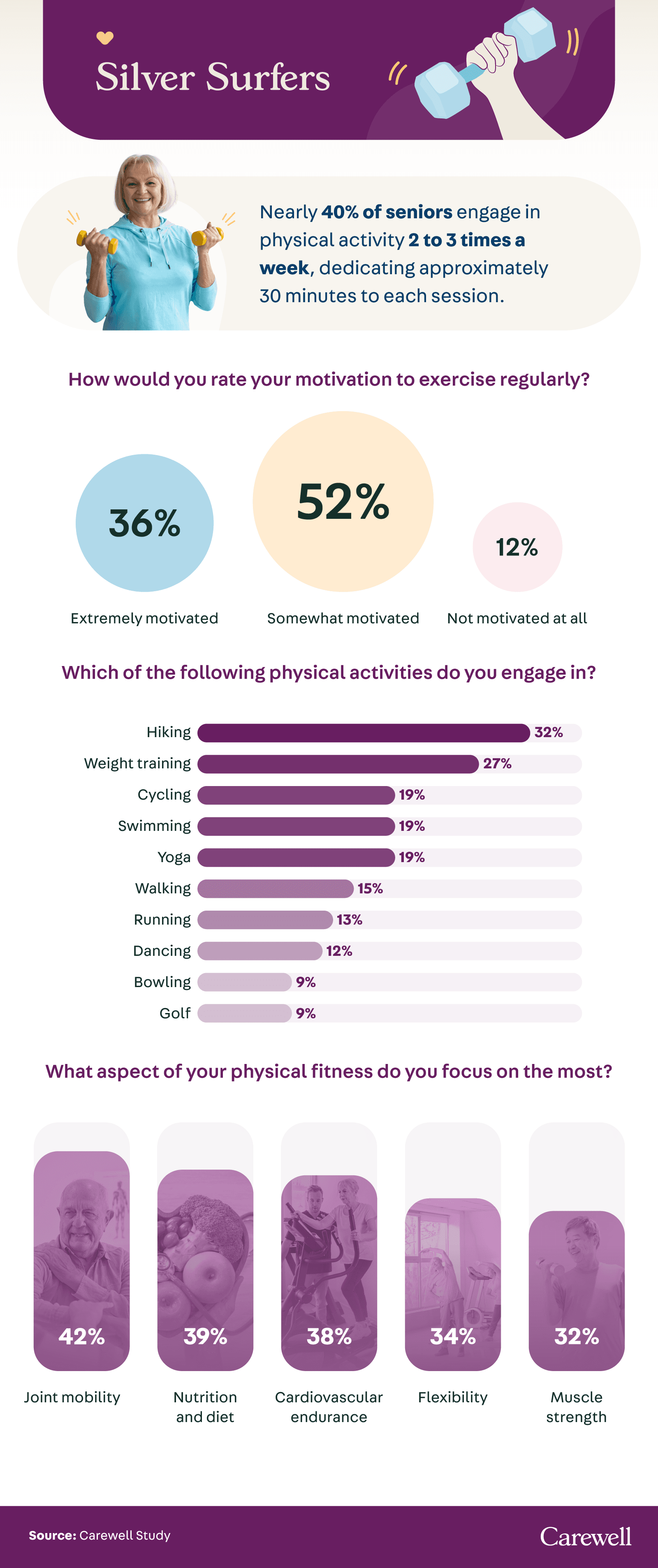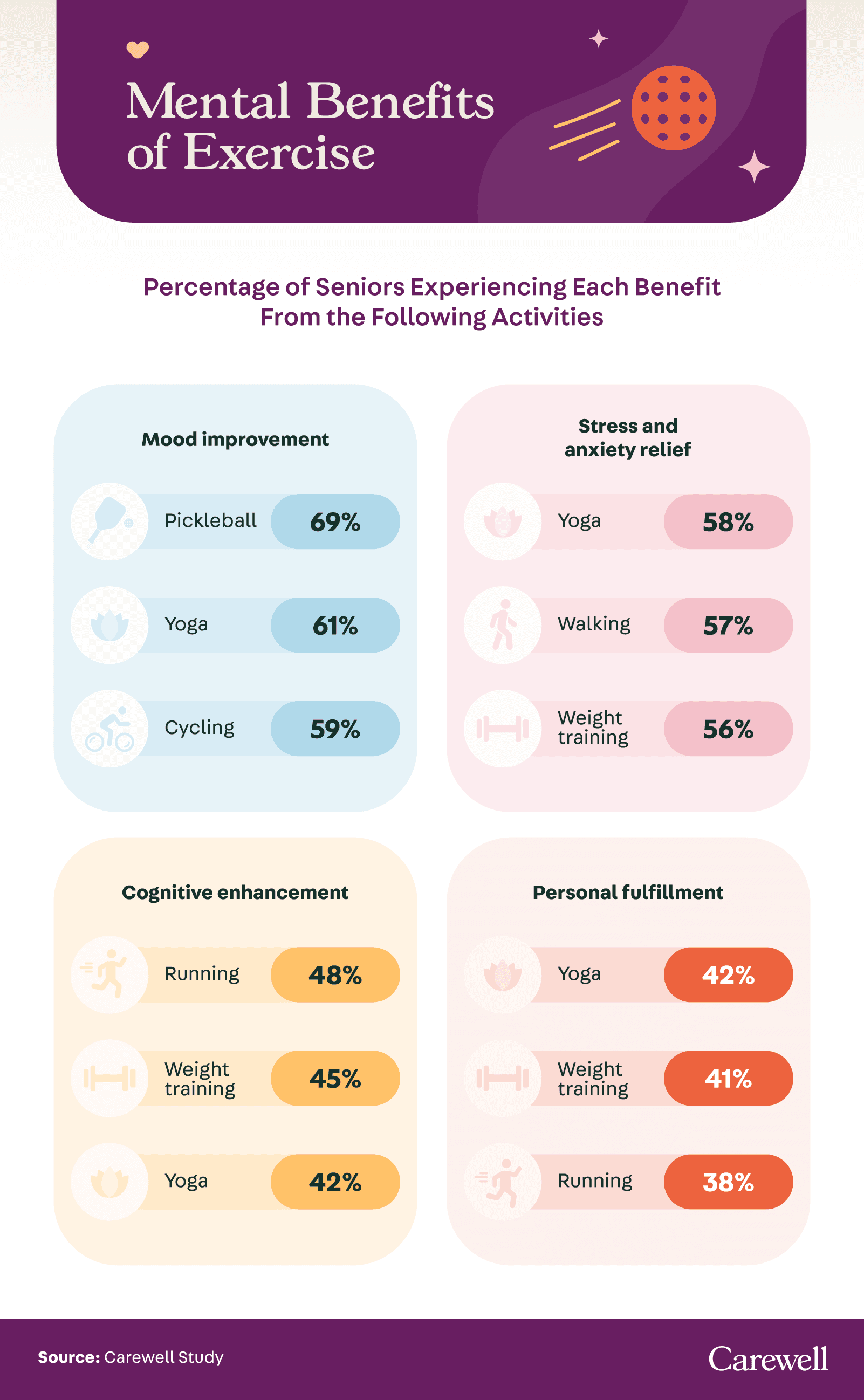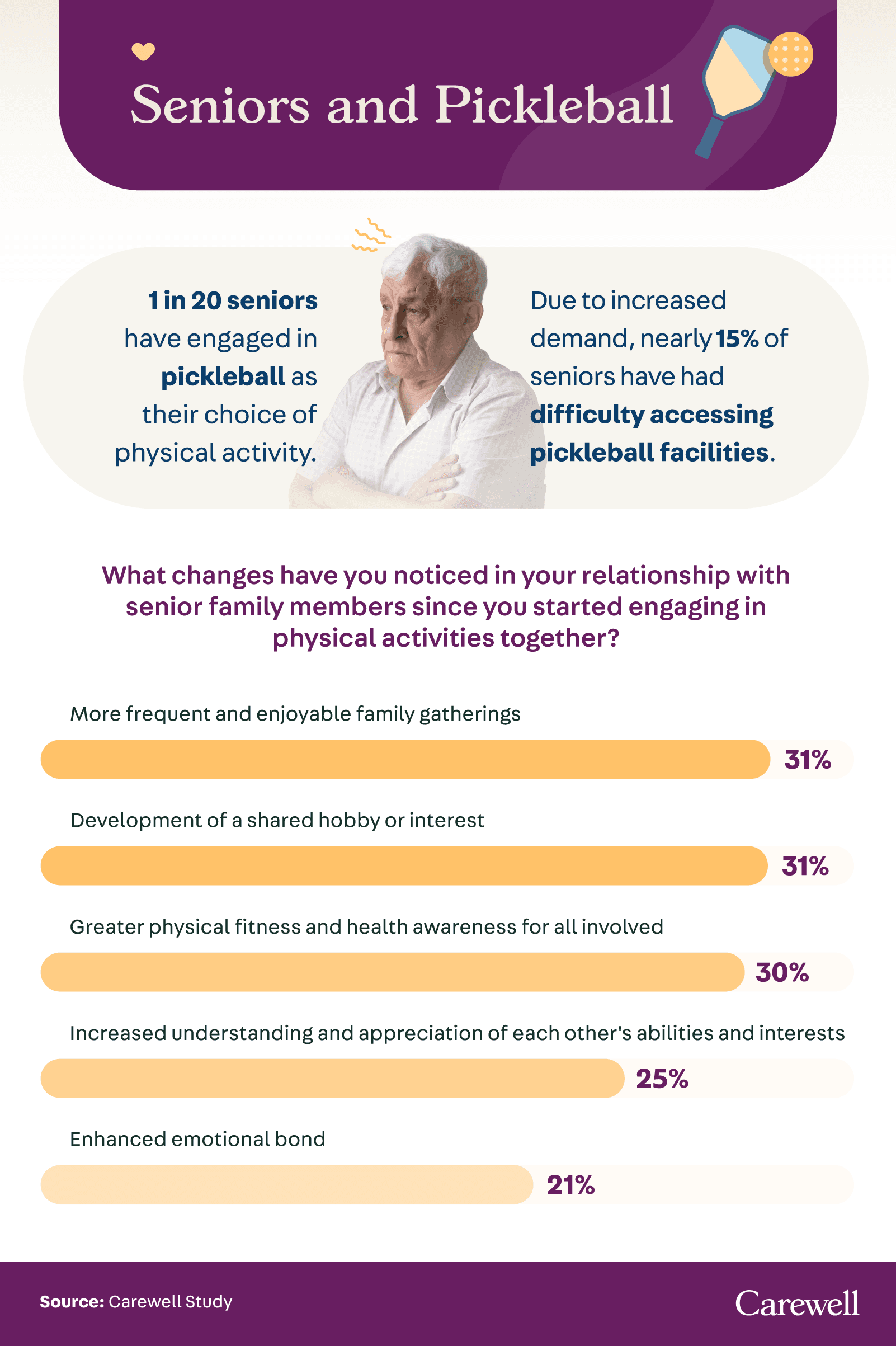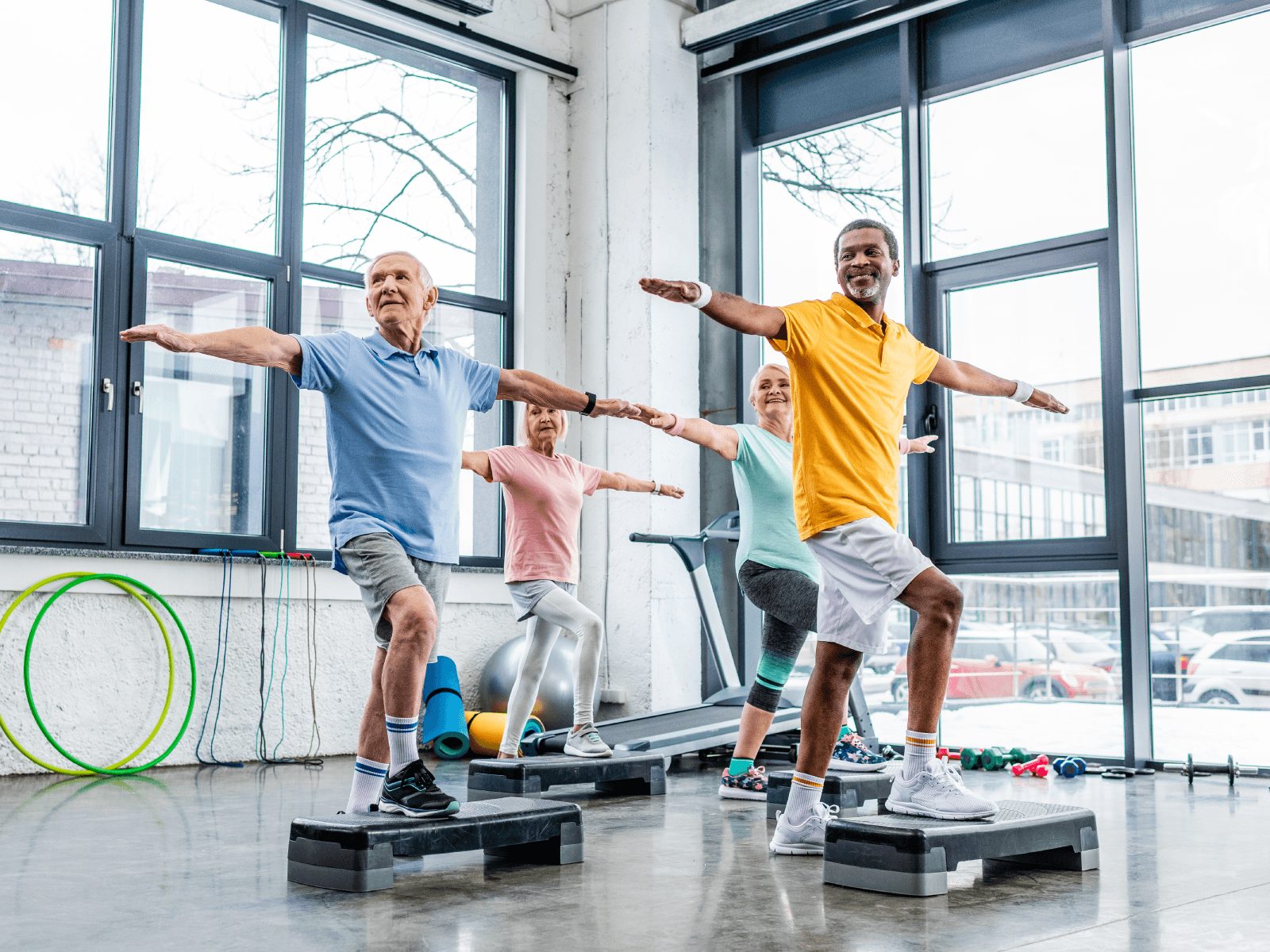Imagine a world where age is not a barrier to fitness, where seniors and younger generations come together through the joy of sports and exercise. This dream is becoming a reality across America as seniors redefine fitness and family dynamics through their evolving active lifestyles. At the heart of this transformation is the unexpected rise of pickleball, a sport rapidly carving its niche among older adults and bridging the generational divide.
Carewell’s extensive survey, involving 800 seniors aged 55 or older and 200 younger Americans, guides us through the following exploration. Our findings reveal seniors’ diverse fitness routines and how these activities forge deeper connections within families. Our study tells a story of transformation, community, and overcoming challenges, where seniors’ resilience and adaptability revolutionize the narratives of senior fitness and family bonding.
Key Takeaways
69% of seniors who play pickleball report it boosts their mental well-being.
36% of Gen Zers and millennials connect with older family members through physical activities.
Running, weight training, and hiking are the most common physical activities that help younger generations connect with older ones.
Nearly 1 in 10 younger generations say pickleball, one of America’s fastest-growing sports, is helping them connect with their older family members.
Nearly 15% of seniors have difficulty accessing facilities for pickleball due to increased demand.
The Fitness Habits of Seniors
With many seniors embracing a more active lifestyle, it’s enlightening to see how they craft their fitness routines.

Our survey revealed that nearly 40% of seniors commit to physical activity 2 to 3 times a week, each session lasting around 30 minutes. However, this dedication to regular exercise contrasts with the 12% who find themselves entirely unmotivated to engage in any form of physical activity, highlighting a diverse range of attitudes toward fitness in the senior community.
Senior fitness enthusiasts showed certain preferences in their activities, with hiking leading at 32%, followed by weight training and cycling at 27% and 19%, respectively. Beyond just staying active, seniors were increasingly mindful of their overall health, prioritizing joint mobility (42%), nutrition and diet (39%), and cardiovascular endurance (38%). This approach to fitness shows they understand how these different health aspects connect to overall well-being.
Seniors are not just staying active — they’re strategically targeting key areas to enhance their quality of life.
Seniors’ Fitness Insights
Embracing fitness in their golden years, seniors are finding joy and health benefits in various forms of exercise.

Pickleball, yoga, and cycling topped seniors’ list of mood boosters, while they favored yoga, walking, and weight training for reducing stress and anxiety. Notably, running, weight training, and yoga have enhanced their cognition while fostering personal fulfillment. It’s no wonder 70% of seniors regarded fitness as a critical component for their long-term well-being and independence, emphasizing its significance beyond physical health.
However, they’ve also faced challenges in maintaining a consistent fitness regime. The primary barriers included lack of energy (38%), insufficient motivation (32%), and lack of time (27%). To overcome these obstacles, seniors have most often adopted the following strategies:
Setting realistic fitness goals (37%)
Making exercise part of their daily routine (35%)
Focusing on enjoyable activities to boost motivation (30%)
Seniors’ adaptability is further evident in how they have modified their fitness routines as they’ve aged:
46% switched to lower-impact activities.
35% focused more on stretching and flexibility exercises.
33% adjusted their workout intensity and duration to suit their energy level.
As we’ll explore further, these fitness choices have had specific effects on seniors’ overall health and quality of life.
Generational Game-Changers
In an era where digital connections often surpass physical ones, physical activities offer a reason to put down our devices and connect with loved ones over shared interests.

It’s refreshing to see that 36% of Gen Zers and millennials have fostered family bonds through physical activities. This trend shows us the power of shared experiences in strengthening generational ties. Notably, nearly 1 in 10 young adults have turned to pickleball, America’s fastest-growing sport, as a fun and engaging way to connect with senior family members, bridging the age gap with every serve and volley.
These younger generations have chosen a variety of activities to stay connected with their senior loved ones. Running led the pack with 43%, followed closely by weight training at 42%, demonstrating a commitment to shared activities and health goals. Hiking, cycling, and yoga were also popular, each with its unique appeal, while swimming, basketball, dancing, tennis, and soccer completed the top 10.
These activities, chosen by over 10% of Gen Zers and millennials to engage with older family members monthly, could be catalysts for creating lasting memories and deepening familial bonds. As we move to the next section, we’ll uncover how these shared activities influence family dynamics and individual well-being.
Seniors on the Courts
Pickleball, a blend of tennis, badminton, and ping-pong, has garnered remarkable popularity among seniors. Let’s see how this beloved sport is improving family relationships.

Of the seniors we surveyed, 1 in 20 have played pickleball. However, their enthusiasm for the sport wasn’t always without its challenges; nearly 15% of seniors reported having difficulty accessing pickleball facilities due to heightened demand. Yet, the hurdles in finding a court pale in comparison to the game’s many benefits.’
The positive effects of pickleball extend beyond the court and could even reshape family dynamics. Many family members reported more frequent and enjoyable gatherings or the development of a shared hobby. Seniors playing pickleball have also experienced substantial health benefits:
69% reported reduced stress and anxiety.
64% found the game uplifting.
50% cherished the sense of community it fosters.
Notably, 42% of seniors observed a decrease in stress and anxiety, while 36% experienced enhanced cognition and increased self-esteem after playing pickleball. These profound impacts suggest that pickleball could improve seniors’ mental well-being and strengthen family bonds.
Revolutionizing Retirement
Seniors are not just participating in physical activities; they are revolutionizing how we think about aging and wellness. From the pickleball courts to hiking trails, older adults are proving that age is merely a number when embracing an active lifestyle. This transformation goes beyond personal health, fostering stronger bonds between generations and creating communities united by shared interests and goals.
The insights from our survey show us the value of sports like pickleball for enhancing seniors’ mental well-being, connecting family members, and overcoming fitness barriers. Yet, these findings also highlight seniors’ challenges, from accessibility issues to the need for motivation and energy. Our findings call for a collective effort to support and encourage healthy aging, ensuring opportunities for fitness and connection are available to all seniors.
The story of senior fitness is one of inspiration and empowerment. Regardless of age, it challenges each of us to rethink our approach to health, community, and family interaction. Communities and families can embrace and facilitate these generational game-changers, ensuring people’s golden years are filled with vitality, joy, and connection. The journey doesn’t end here; it invites us to continue exploring, supporting, and celebrating the active, engaged lives of seniors everywhere.
Methodology
Carewell surveyed 800 seniors aged 55+ and 200 younger Americans to investigate their various fitness routines and to examine how these activities interact with and influence their family dynamics. The average age of senior respondents was 60, with a generational representation of 51% baby boomers and 49% Gen X and a gender breakdown of 38% male, 61% female, and 1% nonbinary. The average age of younger respondents was 40, with a generational representation of 84% millennials and 16% Gen Z and a gender breakdown of 54% male, 44% female, and 2% nonbinary.
About Carewell
At Carewell, we understand the challenges of caregiving, and our goal is to support caregivers and offer comfort and dignity to those who depend on them. We’re here to make caregiving easier with the right products and dedicated support.
Fair Use Statement
If you’re interested in sharing our insights on people’s diverse fitness routines and how family dynamics influence them, we welcome you to do so for noncommercial purposes. We kindly request you include a link to this page to provide proper attribution and access to our full research findings.





